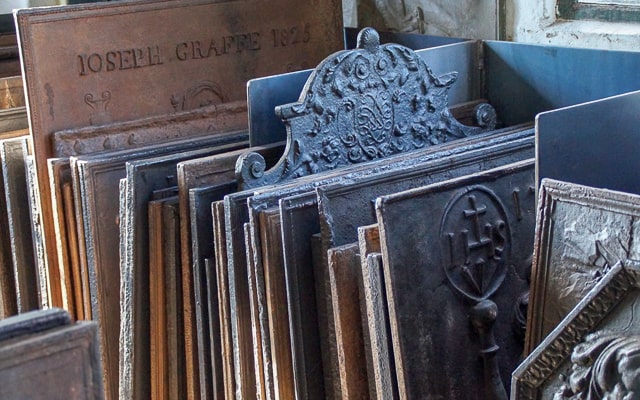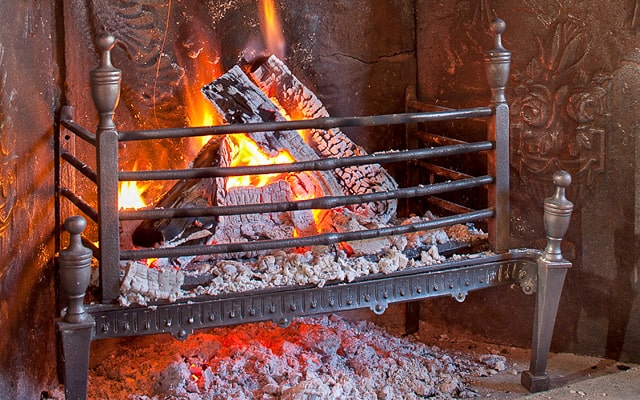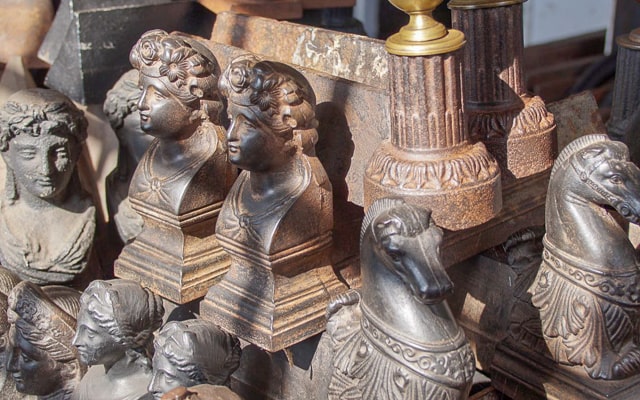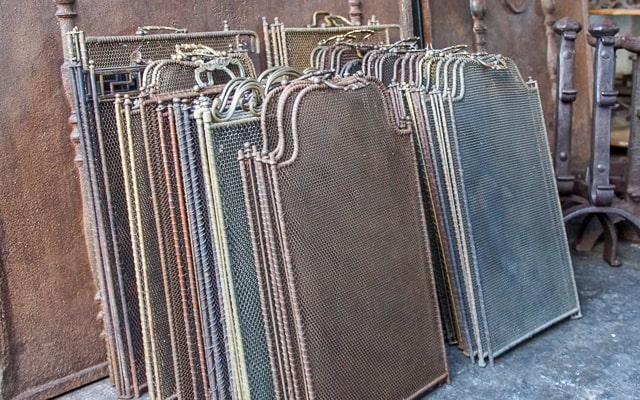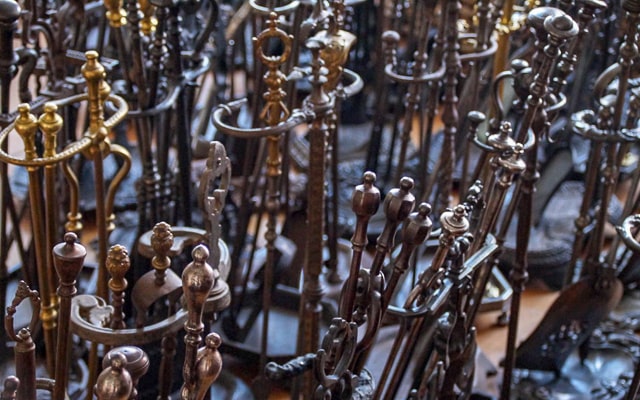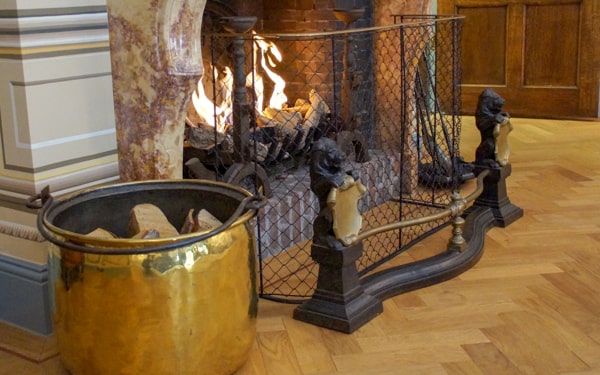
Verbeter uw haard met antieke haardaccessoires
Een haard biedt warmte, geborgenheid en stijl, zelfs nu de haard vaak niet meer de belangrijkste bron van warmte is voor de mens. Antieke haardaccessoires versterken dit door de tijdloosheid en schoonheid van het vakmanschap waarmee het gemaakt is. De kwaliteit van de met vakmanschap gemaakte haardaccessoires is daarbij superieur aan de hedendaagse producten.
Met haardaccessoires beheer je het vuur in de haard en vergroot je de veiligheid van het vuur. Zo werkt een gietijzeren haardplaat of kachelplaat als een radiator, waardoor de efficiëntie van de open haard met maar liefst 50 % kan toenemen. Hoe dikker / zwaarder de gietijzeren haardplaat, hoe langer en zachter dit stralingseffect. Door het toepassen van haardbokken of een rooster kan de trek in de haard aanzienlijk verbeteren. Verdiep je in de functionaliteit van haardaccessoires en in de decoratieve waarde die antieke haardaccessoires hebben. Lees hierover in onze blog: Welke haardaccessoires heb ik nodig?
Kies uit de grootste collectie haardaccessoires met de beste prijzen
We hebben een enorm assortiment van meer dan 500 oude en antieke haardplaten, meer dan 300 paar vuurbokken en een grote collectie andersoortige haardaccessoires zoals haardroosters, haardschermen, haardstellen en haardsets en houtbakken. Bekijk onze huidige voorraad haardplaten in onze webshop: 500+ Haardplaten online te bestellen
Geniet van gratis snelle levering in de EU
We leveren binnen 1 tot 4 werkdagen tegen scherpe tarieven en boven de €165 (excl BTW) zelfs gratis. In de winkelwagen kunt u de bezorgkosten zien. Alle artikelen in de website zijn op voorraad, zijn online te bestellen, en worden snel geleverd. De prijzen op de website zijn excl. BTW.

Maak gebruik van deskundig advies
In onze blog vindt u artikelen over allerlei onderwerpen met betrekking tot het gebruik van haardaccessoires. Daarnaast kunnen we u ook maatwerk advies leveren. Op basis van door u opgestuurde foto’s en maten van uw haard kunnen we voorstellen doen voor haardaccessoires. Vaak is de haardplaat hierbij het uitgangspunt. Daarnaast kunnen we adviseren over afmetingen, stijl en functionaliteit van onze haardaccessoires als ook over het combineren van diverse haardaccessoires tot een fraaie en passende set. We kunnen foto's opsturen van door u gewenste combinaties van haardaccessoires.
Maak een duurzame keuze
Duurzaam stoken komt erop neer om zo snel mogelijk een goed brandend, rustig vuur te maken en het vuur goed brandend te houden. Hierdoor komt er zo min mogelijk roet en CO2 vrij en is het houtverbruik zo efficiënt mogelijk. Duurzaam stoken is stoken met aandacht. Daarnaast is duurzaam stoken het zo goed mogelijk inzetten van de warmte van de haard bij het duurzaam verwarmen van het huis. Lees hierover in onze blog: 12 tips om duurzaam te stoken in de open haard
Haardaccessoires helpen bij het onderhouden van een duurzaam gestookt vuur. Daarnaast is de aanschaf van antieke haardaccessoires een duurzame keuze op zich, omdat ze niet nieuw gemaakt zijn en doordat ze door het toegepaste vakmanschap vaak stevig zijn en mooi gemaakt.

